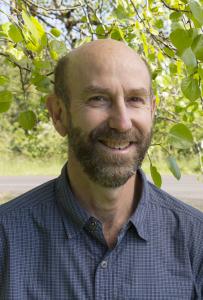Steve Strauss
University Distinguished Professor, Department of Forest Ecosystems and Society, Oregon State University
Expert Bio
Dr. Steven H. Strauss is a Distinguished Professor of Forest Biotechnology in the Department of Forest Ecosystems and Society at Oregon State University, and has a joint appointment in the Molecular and Cellular Biology Program. He is Director of the Tree Biosafety and Genomics Research Cooperative at OSU, a university-public agency-industry consortium formed in 1994. It conducts research on the biosafety and physiology of genetically engineered trees used in plantation forestry and horticulture. Strauss directed the OSU Program for Outreach in Resource Biotechnology from 2004-2013, which was aimed at promoting public understanding, and facilitating science-based public debates, in food and natural resources biotechnology (http://agsci.oregonstate.edu/orb/).
Strauss received the Barrington-Moore Memorial Award from the Society of American Foresters in 2001, which recognizes outstanding achievement in biological research leading to the advancement of forestry. He was recognized as a Fellow of the American Association for the Advancement of Science in 2009, for advancing of the science and policy regarding forest biotechnologies. He was the Forest Biotechnology Partners Forest Biotechnologist of the Year in 2009 recognizing his outstanding contributions to science, dialogue, and stewardship. In 2005 he was recognized as a Leopold Leadership Fellow, taking part in a program aimed at training eminent environmental scientists to be more effective at influencing public policy and presenting science to news media.
Dr. Strauss has earned degrees in biological sciences from Cornell (BS), Yale (MFS), and the University of California at Berkeley (PhD). He has published 200 scientific papers, given more than 200 invited lectures on biotechnology and genetics of trees, and obtained more than 18 million dollars of competitive grant support. His laboratory has trained 22 graduate students, 27 postdoctoral scientists, and more than 40 professional and technical staff. He has served on panels at the United States National Research Council, National Science Foundation, and Department of Agriculture. Dr. Strauss' current research focuses on genetic engineering of flowering, stature, and transformation-based "functional genomics" using poplar trees as model organisms. He has also advised governments and written in many scientific journals about national and international regulations on field research and commercial development of genetically engineered crops and trees. He was an editor for the highly cited plant science journal New Phytologist for 9 years.
Studies, Articles and Answers
Showing 3 out of 3 results
Question
A: Scientists were the ones who asked for responsible regulation to start with, beginning with a famous conference in Asilomar, California. This was mainly to ensure precautions were taken with possible human pathogens. Unfortunately, the regulations put in place were overly broad and stringent, leading the public to think all GM crops were dangerous, including experiments that were extremely safe and beneficial. Then some activists and organizations, with Greenpeace the most prominent, started to make campaigns against GM crops and food a major effort of theirs, using a mix of unscient [...]
OtherQuestion
Q: Where did antiGMO start, and what has helped it to spread so much?
A: I answered a similar question here, and have included the response below: “Scientists were the ones who asked for responsible regulation to start with, beginning with a famous conference in Asilomar, California. This was mainly to ensure precautions were taken with possible human pathogens. Unfortunately, the regulations put in place were overly broad and stringent, leading the public to think all GM crops were dangerous, including experiments that were extremely safe and beneficial. Then some activists and organizations, with Greenpeace the most prominent, started to [...]
OtherQuestion
Q: Who started this anti GMO campaign? I know the answer but everyone should it is important
A: I answered a similar question here, and have included the response below: “Scientists were the ones who asked for responsible regulation to start with, beginning with a famous conference in Asilomar, California. This was mainly to ensure precautions were taken with possible human pathogens. Unfortunately, the regulations put in place were overly broad and stringent, leading the public to think all GM crops were dangerous, including experiments that were extremely safe and beneficial. Then some activists and organizations, with Greenpeace the most prominent, started to [...]
Business Practices GMOs & Farmers